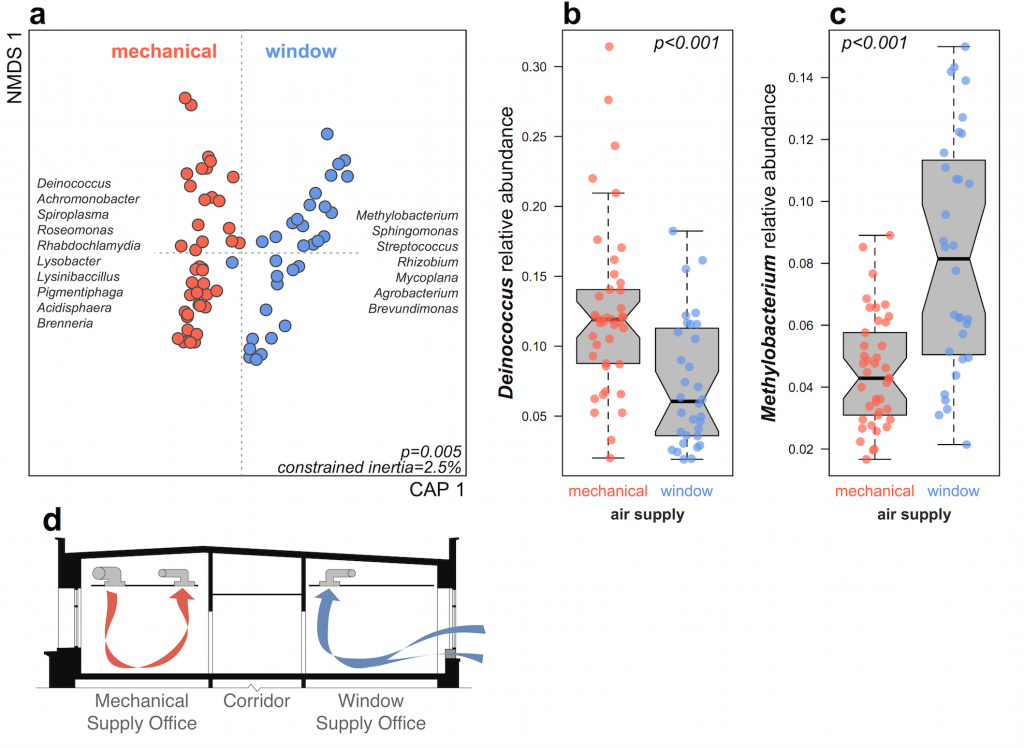
We’ve just published a new paper exploring the bacterial communities hanging out in the dust of a big university building, Lillis Hall. It’s the same building that we used when exploring the effects of ventilation and occupancy on airborne bacteria (published in Indoor Air). This time, we were interested in the long-term accumulation (about a decade) of indoor dust, and how microbes in dust are influenced by architecture and occupant use. We found that what you do in a room, how many people there are in a room, and how well connected rooms are, all make a big difference. We were also surprised to find that offices located right beside one another vary considerably in their dust microbial communities just based on the source of their ventilation (from a window or from a mechanical system).
One of these days, we’ll know enough about the microbes in our buildings to manage them for a healthier indoor environment. This paper helps us understand the architectural choices that we can use in the future to manage our microbes.
The paper is open access and available at PLOS ONE.